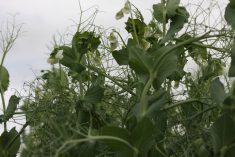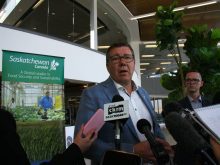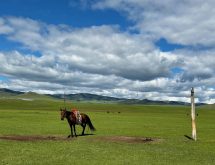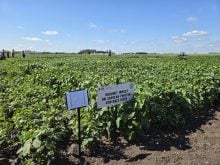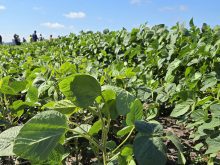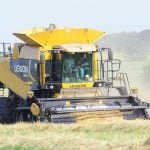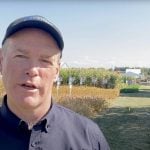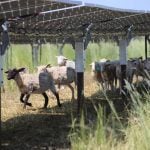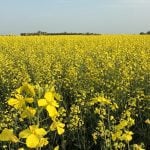Early on in his career Keith Downey was asked why he wanted to pursue a job as a crop breeder.
“Without even thinking I said, ‘I want to make a lasting contribution to Canadian agriculture,’ ” said the retired civil servant. “I never thought that I would be able to do it to such a degree that has come about.”
Downey’s lasting contribution is canola, the second largest crop grown in Canada in 2007, one that generated $1.5 billion in cash receipts during the first half of the year, tying it with wheat as the top moneymaker for Canadian farmers.
Read Also
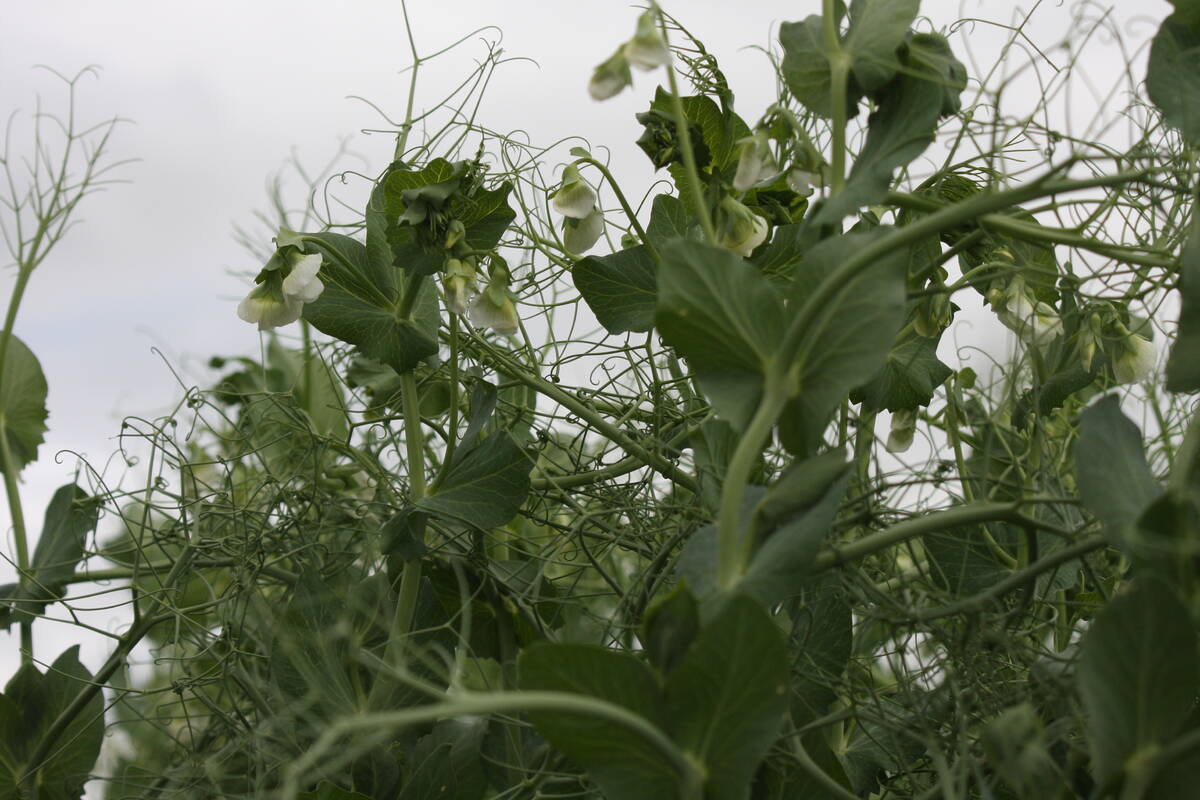
High pea yields shock farmers
There is going to be a massive pea carryout at the end of this crop year.
“It’s very gratifying to say the least,” he said after hearing the latest acreage and revenue numbers.
Downey’s history with the crop stems back to 1939 when he was a Grade 7 student working at a summer job at the Dominion Forage Crops Laboratory in Saskatoon. He was charged with looking after a new crop called rapeseed.
“I planted it, weeded it, put bags on it, even though I didn’t know much about what I was doing.”
He worked with the crop through the completion of his agricultural degree at the University of Saskatchewan. Then in 1952, he accepted a job as an alfalfa breeder at Agriculture Canada’s experimental farm in Lethbridge.
Downey became reacquainted with rapeseed in 1958 when he took a job as alfalfa breeder at Agriculture Canada’s research facility in Saskatoon.
“They said, ‘You better take over this little wee crop rapeseed (as well).’ I said, ‘Sure. That’s fine with me.’ I was always interested in it,” he said.
The crop was languishing at the time because the government had withdrawn its six-cents-per-pound support price for rapeseed.
Rapeseed oil was used as a lubricant for steam engines during the war. The government lost interest in supporting the crop in the post-war era when diesel engines replaced steam engines.
Downey called that a “nice little bit of irony” considering that 50 years later the diesel engine is largely responsible for surging rapeseed demand for use as biodiesel fuel.
The loss of the price support would have been the death knell for the crop were it not for a processor in Moose Jaw, Sask., who found edible oil markets in Europe and Japan for the product. That enabled the crop to expand and attract a domestic crushing industry.
Canadian government officials and nutritionists soon began to see rapeseed as a potential source for domestic supply of edible oil. Canada imported 95 percent of its edible oils during the war.
Nutritionists liked the long-chain fatty acids in rapeseed, but high erucic acid levels were undesirable.
Also, the high glucosinolate level in the meal prompted slow growth when fed to swine and poultry.
Downey and his colleagues were charged with tackling both problems. He used a new tool developed by chemists at the National Research Council to measure erucic acid levels in a world collection of rapeseed germplasm. Once he identified low erucic varieties, he bred the germplasm into lines agronomically suited to western Canadian conditions.
His first low erucic line was released in 1966 and by the mid-1970s, most of the rapeseed crop had been converted.
Downey then identified low glucosinolate material that could be used in Canadian breeding programs. In 1974, the first line of low erucic acid, low glucosinolate or “double low” rapeseed was released by his colleague, Baldur Stefansson of the University of Manitoba. Downey followed that up with his own Polish variety in 1977 called Candle.
By 1980, about five million acres of rapeseed had been converted to double low lines. Crushers came up with the name canola to describe the new crop because “low erucic acid, low glucosinolate rapeseed” was too much of a mouthful when describing it to customers. Downey said the name was chosen because “can” stood for Canada and “ola” sounded like oil.
Thirty years after the commercial release of Candle, Downey still gets “a little thrill” each time he sees a canola crop featured on a magazine cover or in an advertisement. But he is modest about being credited as the father of a 14.6 million acre crop that has transformed Canadian agriculture.
“It helps to be in the right place at the right time,” said Downey. “A lot of the credit has to go to the plant itself.”
The brassica species is easily manipulated compared to a plant like alfalfa, which is not as responsive. That’s why it was an easy choice when he was told by his boss to choose between the two crops.
“I said, ‘There’s no question. I’m a rapeseed breeder.”
Downey can’t recall who first referred to canola as Canada’s Cinderella crop, but he thinks it is an appropriate moniker. His work helped transform a little-known industrial crop into one of the most nutritious vegetable oils in the world, one that rivals wheat as Canada’s top money earner.
“It’s nice to be able to fulfil your dreams sometimes,” he said.
Later in his career Downey played an important role in the development of genetically modified canola, working closely with Bayer on its Liberty Link project.
He vividly recalls the ho-hum response by the media to Agriculture Canada’s invitation to witness the first planting of Monsanto’s Roundup Ready canola at the Scott Experimental Farm.
“To a man, the reaction was, ‘Well, don’t bother us with that.’ “
He was heavily involved in defending GM crops when groups like Greenpeace and Friends of the Earth began what Downey considers an “unconscionable” campaign of misinformation.
“They really have no ethics as far as I’m concerned,” he said.
When he retired from Agriculture Canada, Downey was credited as the breeder or co-breeder of 13 rapeseed/canola varieties, five condiment mustards and one alfalfa variety. Among the many honours bestowed on Downey are officer of the Order of Canada and inductee in the Saskatchewan and Canadian Agricultural Halls of Fame.
These days the 80-year-old is writing a document on the biology of the brassica species for the Canadian Food Inspection Agency and consulting for various companies.
“That keeps me almost busier than I want to be,” said Downey.



